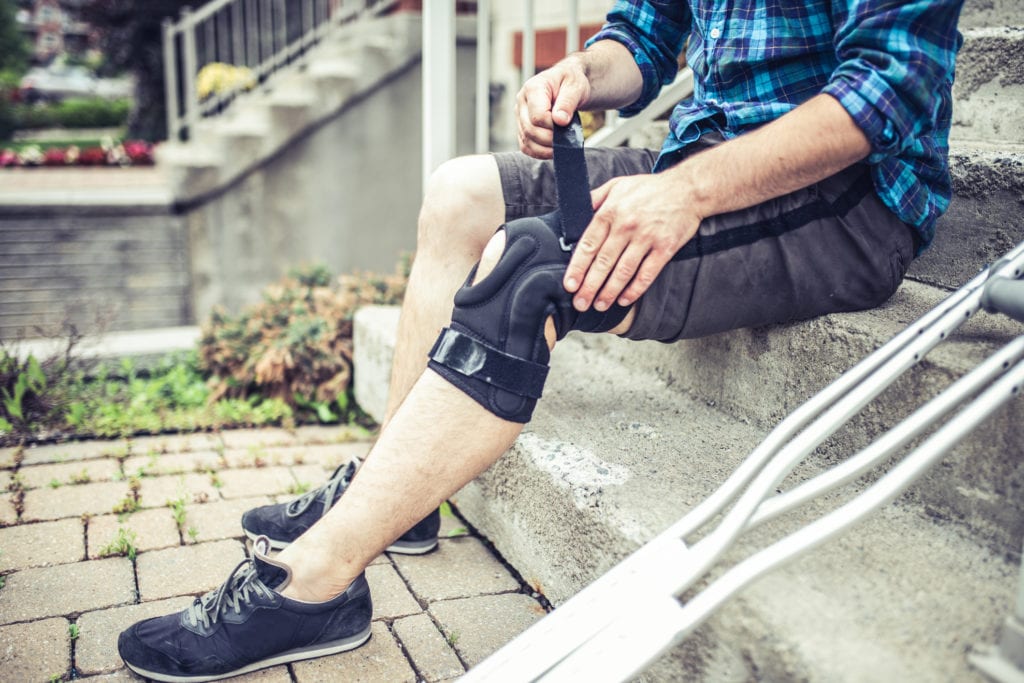Daily activities can put a lot of stress on your joints. Your knees, especially, take the brunt of the wear and tear.
Over time, the cartilage (tissue) that protects the bones in your knee can wear away. This damage can lead to a painful condition called osteoarthritis, which can make even the simplest of activities painful.
When medications and other therapies no longer provide osteoarthritis relief, it may be time for total knee-replacement surgery.
What Is Total Knee-Replacement Surgery?
During a total knee-replacement surgery, surgeons replace damaged portions of your knee with a metal and plastic implant restoring function to your knee.
Each year across the U.S., surgeons perform nearly 700,000 total knee replacements. The average age for total knee replacement is just over 65 years old.
Many people who need a total knee replacement lead active lives and don’t want to be sidelined by surgery. Offering less-invasive options for total knee replacement has become a priority for orthopaedic surgeons.
Robotic-Assisted Total Knee-Replacement Surgery
The board-certified orthopaedic surgeons at Emory Healthcare have taken knee care to the next level.
The team now offers total knee-replacement surgery using the Mako Robotic-Arm Assisted Technology. Manufactured by Stryker Orthopaedics, the Mako system is a highly technical approach to minimally invasive knee-replacement surgery.
During total knee replacement surgery using the Mako system, surgeons create small incisions and guide a robotic arm to remove damaged bone and cartilage. They then guide the robotic arm to place your knee-replacement implant.
Surgeons use computer technology to aid in the alignment of your implant.
Seeing the Knee in 3-D: A Personalized Approach
With the Mako Robotic-Arm Assisted Technology, the Emory Healthcare team creates a 3-D virtual model of each patient’s knee before their surgery.
They use this 3-D model to create a personalized surgical plan based on each patient’s unique anatomy.
Benefits of Robotic-Assisted Total Knee Replacement
Minimally invasive, robotic-assisted knee-replacement surgery has many benefits. These include:
- Smaller incisions
- Less scarring
- Decreased pain following surgery
- Shorter hospital stays
Perfecting the Total Knee-Replacement Technique
George Nelson Guild III, MD, orthopaedic surgeon at Emory Orthopaedics and Spine Center, is an international leader in knee-replacement surgery and uses the Mako system.
In 2019, Dr. Guild was one of four surgeons selected by The Knee Society for the prestigious John N. Insall Traveling Fellowship.
This month-long program — named for a pioneer in the field of knee surgery — allowed Dr. Guild to learn from 11 of the world’s top orthopaedic institutions.
He was especially focused on seeing how other expert surgeons perform robotic-assisted total knee replacements.
“The host centers did a spectacular job of engaging and teaching us the latest techniques being performed in their centers,” said Dr. Guild.
Dr. Guild plans to use the knowledge he gained to help patients with pain relief, range of motion, and function post-surgery.
To learn more about the benefits of robotic-assisted minimally invasive surgery or to schedule your appointment, call 404-778-3350 or visit emoryhealthcare.org/ortho.
